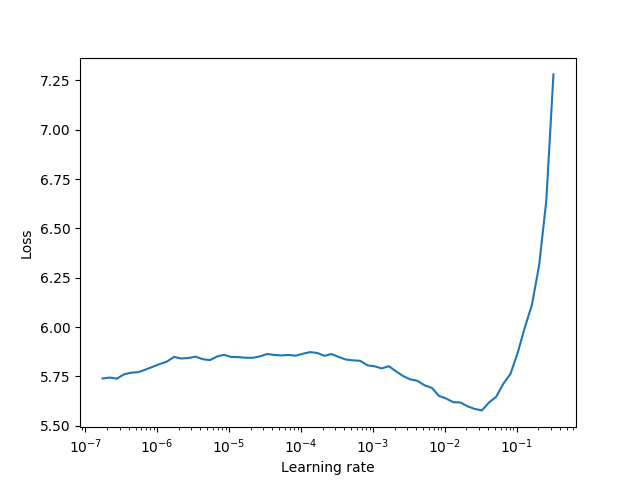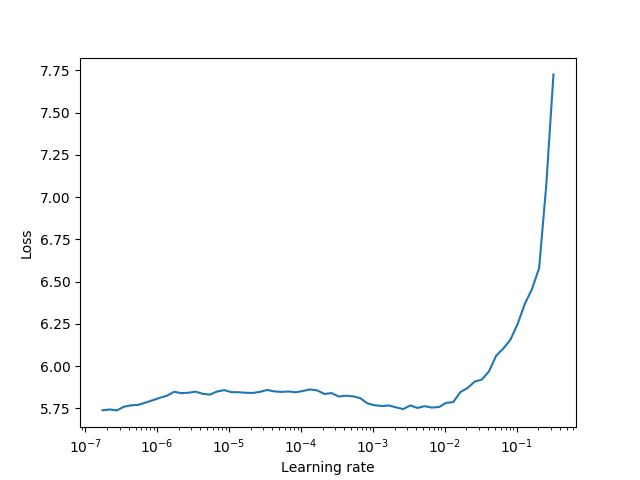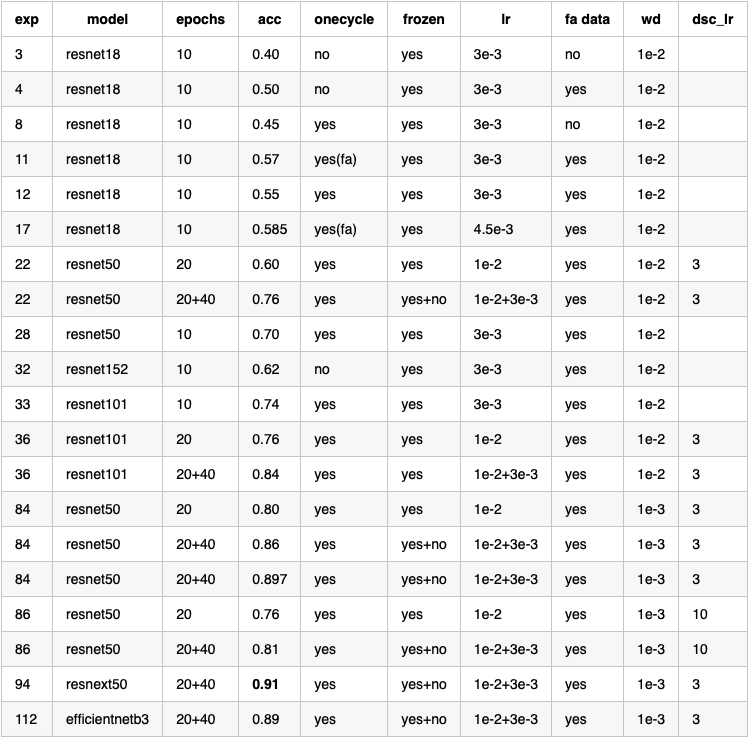Fine grained image classification on the Stanford Cars dataset. The model achieves ~91.4% accuracy on the test set.
To achieve a fair evaluation of the final model, the test set is not used at all at figuring out model architecture and hyper-parameters. They are chosen using a 20% validation set. Once they are decided, the model is trained again on the entire training+validation set and evaluated on the test set. The input images are initially sized at 224, but later increased to 299. The fastai library is used to do data augmentation.
A good learning rate is estimated between stages by plotting the loss vs learning rate. We pick learning rates at areas where the loss is decreases at the highest rate.
Frozen Resnext model
Resnext model
The model is trained on a frozen (except BN layers) resnext50 model for 20 epochs and then finetuned with discriminative learning rates for 40 epochs. The model uses 3e-4, 1e-4, 3e-3 as learning rates for each third of the model. After this, the training images are increased to 299 and the model is retrained for another 40 epochs.
The AdamW implementation of Adam is used together with the One Cycle Policy as it is seen that training results are much better and converges faster.
Things that I couldn't get to work
Since google just released EfficientNet, I attempted to replace the resnext50 with this EfficientNet implementation. However I was only able to reach ~89% accuracy on the validation set.
Some notes:
- Model reached 85%+ much quicker than resnet50 and resnext50. However it was unable to break the 90% threshold. I believe more careful finetuning can lead to better results.
Clone repository
git clone https://github.com/vivekkalyan/fine-grained-image-classification.git
cd fine-grained-image-classification
Setup virtual environment
virtualenv -—python=python3 env
. env/bin/activate
Download and extract data
make
run.py file has the parameters used to train the final model that achieves ~91.4% accuracy.
python run.py
A test script is provided to test on the "hold-out" data.
In the test.py file, update the folder of the images (folder), the csv file (labels_csv) and the model (train.load_checkpoint()).
Note: if the csv has a different format, you will to specify which column the labels are in (label_col)
Experimental Results


